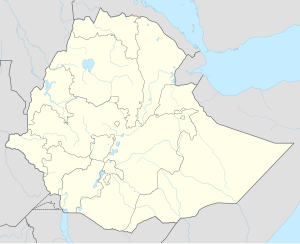|
Negash
Negash is a village in the Tigray Region of Ethiopia, which straddles the Adigrat to Mekelle road 10 kilometres (6.2 miles) north of Wukro. It is located in Wukro woreda. History  Negash is considered to be the earliest Muslim settlement in Africa; a cemetery from the 7th century CE has been excavated inside the village boundaries.[1] The Futuh al-Habasha records Ahmad ibn Ibrahim al-Ghazi visited the tomb of Ashama ibn Abjar in Negash during his invasion of the province of Tigray (around 1537).[2] Negash is also known for having one of Africa's oldest mosques,[3] that is the Al Nejashi Mosque. In 2020 during Tigray War, the Al Nejashi Mosque was heavily damaged from shelling and looting.[4] DemographicsIn the statistical tables of the 2007 census published by the Central Statistical Agency, the kebele Negash is located in is reported to have a total population of 7,753 of whom 3,607 are men and 4,146 women; they are distributed amongst 1,689 households in 1,626 housing units. Although it is known for its particular relationship with Islam, 98.2% of the population follows the Ethiopian Orthodox Tewahedo Church, the 1.1% of the population is Protestant, and the remaining 0.7% is Muslim.[5] ClimateNegash, located in the Tigray region of Ethiopia, experiences a semi-arid climate with distinct wet and dry seasons. The rainy season spans from June to September, with July and August receiving the heaviest rainfall. Temperatures in Negash are generally warm throughout the year, with cooler nights and occasional variability depending on elevation and rainfall. The dry season, from October to May, sees minimal precipitation, and the landscape remains arid.
See alsoReferences
|
||||||||||||||||||||||||||||||||||||||||||||||||||||||||||||||||||||||||||||||||||||||||||||||||||||||||||||||||||||||||||||||||||||||
